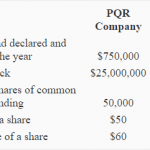Pokermatch Промокод Фриспинов Сделай ставку
26 يونيو، 2024Рейтинг лучших онлайн казино на реальные деньги 2024 года, ТОП 13 новых клубов в России Топ казино.Автор — fan171560809907447319814 мая, 16:49В мире азартных игр онлайн казино занимают особое место, предоставляя удобную возможность испытать удачу и получить выигрыш прямо из дома. В России, как и во многих других странах, интерес к онлайн казино продолжает расти. Стремительное развитие технологий и новые игровые платформы делают игровой процесс ещё более захватывающим и увлекательным. Для тех, кто ищет лучшие онлайн казино на реальные деньги в 2024 году, вот наш ТОП 13 новых клубов в России.Рейтинг Топ 13 новых казино онлайн на реальные деньги на рубли
30 يونيو، 2024
BI tools like Tableau and Power BI help visualise and analyse internal and external data more effectively. You can use BI tools to create custom dashboards and combine financial and operational data to draw insights that typical visualisation tools can’t offer. Top software solutions offer an extensive feature set, including real-time reports and financial dashboards that allow you to track KPIs and compare them with benchmarks. Private companies are not required to disclose financial data, which can lead to a lack of information needed to establish benchmarks. A clear goal grounded in concrete data helps you develop practical strategies to improve financial performance or address existing problems. Assessing your financial performance is critical to running a successful business.

Powerful financial reporting
Inventory turnover ratios measure how quickly companies sells through their inventory balance. You calculate inventory turnover as the cost of goods sold divided by the net income. This figure tells you how many times you “sold through” the inventory balance during the period. Companies with a decreasing inventory turnover ratio may be having a harder time invoicing apps selling goods than in the past, which could signal less demand for the company’s products. To conclude, benchmarking serves as a critical tool in promoting and assessing sustainability in finance. Constant tracking and assessment against these benchmarks allow companies to identify areas of strength and weakness in their sustainability performance.
Accurate financials.Total peace of mind.
It’s a tool that significantly contributes to gauging efficiency and profitability. Financial benchmarking is the process of comparing your company’s financial performance to financial benchmarks. CFOs, internal and external analysts, and the 7 best accounting apps for independent contractors in 2023 consultants use financial benchmarking to get a contextual understanding of the company’s financial performance.
Key metrics, including operational metrics, such as sales growth and EBIT margin, and valuation metrics, such as equity and enterprise value, are calculated for comparable companies. These values are then used as a benchmark to extrapolate the value of a business and make comparisons. One of the most common obstacles to successful financial benchmarking is the lack of reliable or complete data. Depending on the industry or the specific financial factors being analyzed, it may be difficult to find comprehensive, up-to-date sets of data for benchmarking purposes.
Types of Benchmarking
- Those scoring low are expected to benchmark their results against higher-scoring locations to determine how their performance can be improved.
- A significant juncture between benchmarking and CSR is in the area of responsible investment benchmarks.
- If both seem normal, you’ll need to explore other causes that could have driven down the revenue figure or driven up the COGS.
In conclusion, benchmarking plays a pivotal role in steering companies toward better performance by providing highly valuable comparative industry data. Its emphasis on continuous comparison and adaptation fosters a culture of constant growth and improvement, building a robust, competitive organization in the long run. In other words, cost accountants look at the company past performance and set standards for future performance. For example, a cost accountant or managerial accountant might analysis the level of fixed and variable costs in a production process for the last three years. Financial benchmarking requires two key things–a basic understanding of what you’re trying to achieve and the financial data required to establish benchmarks.
The effectiveness of ROA hinges on finding a company for comparison that has a similar capital structure. Asset structure, or asset composition, is the mixture of assets on the company’s balance sheet. Comparable firms should have about the same percentage of each of the assets on the balance sheet.
The Bench platform gives you monthly financial statements and expense overviews to keep you in control of your money. At-a-glance visual reports help you see the big picture and give you actionable insights to help you grow your business. It’s not always possible to find reliable, up-to-date data, especially if there are no comparable public companies or associations that publish benchmarks. Both of them are lower than industry averages, which tells you that you need to streamline inventory management and improve receivables collection–there’s no need for more capital.
Managers can then use the average costs over the past three years as a benchmark. It can then judge the current performance against the benchmark and find new way to improve. Each customer’s main point of contact is a dedicated in-house, professionally-trained bookkeeper, based in North America.
The reference point you choose needs to be aspirational, yet within reach, otherwise, your benchmarking efforts could be counterproductive, leading to unrealistic expectations and goals. Arguably one of the most significant applications of benchmarking in correct spelling for calendarize finance is the way it aids in evaluating the standing of the company in the industry. It becomes a standard or point of reference against which a company’s profitability, efficiency, competitiveness, and overall financial health can be measured. Benefits can be gleaned from tracing comparable public companies and indexes, facilitating an understanding of where an organization stands in the increasingly competitive market. It is a crucial tool for both financial and managerial accounting, as well as for evaluating organizational goals, responsibility center performance, and overall performance measurement.
